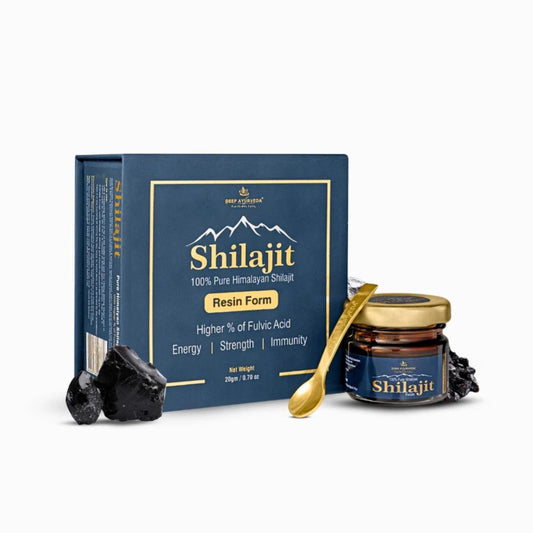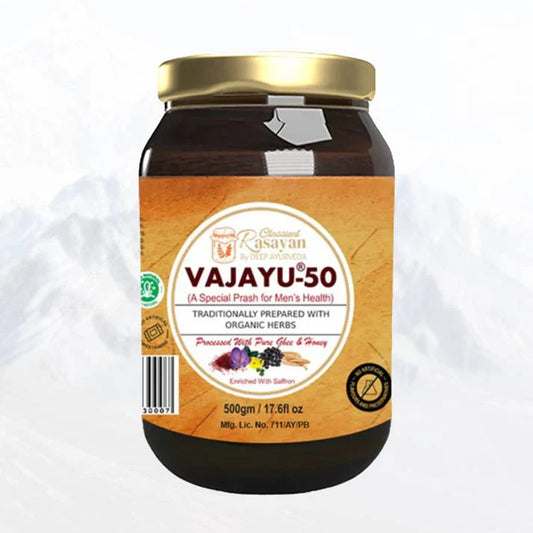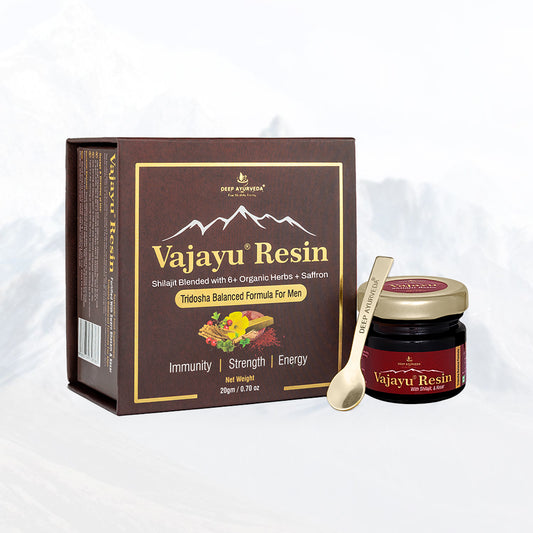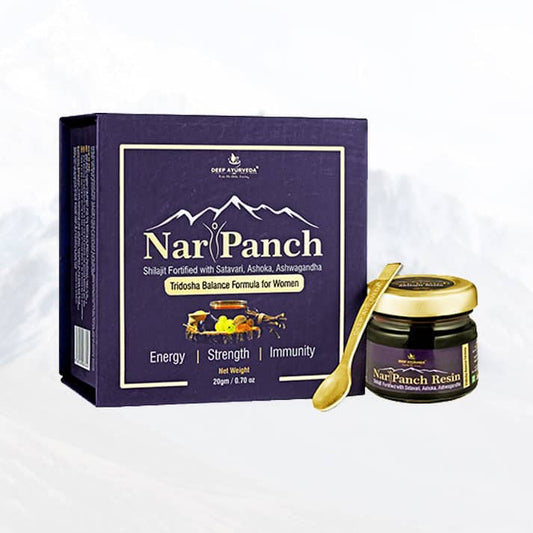Natural Remedies for Hyperpigmentation through Ayurveda: Ayurveda Treatment for Hyperpigmentation results in uneven skin tones, with dark patches or spots that may affect one's self-esteem. While modern methods like chemical peels and laser treatments can provide short-term solutions, they might also pose potential risks and adverse effects.
Ayurveda, a traditional Indian medicinal practice, proposes a holistic method for managing hyperpigmentation. It focuses on regulating the body's systems and nurturing skin health internally.
At Deep Ayurveda, we are renowned for our expertise in Ayurvedic consultation in Australia, where patients can find exceptional care for skin conditions. Dr. Baldeep Kour, a professional Ayurveda Expert, is well-known for his holistic approach to hyperpigmentation treatment using Ayurveda.
In this article, we will read about the Ayurvedic perspective on treatments, causes, symptoms, and natural remedies for hyperpigmentation. It will also offer guidance on lifestyle and diet changes necessary for maintaining healthy, glowing skin. So, let’s read on to find out those remedies and Ayurveda practices for hyperpigmentation!
Ayurvedic Treatment for Hyperpigmentation: Causes
Before discussing Ayurvedic treatments for hyperpigmentation, it's important to understand why it happens. Here are the main reasons:
1. Sun Exposure: Spending too much time in the sun and getting too much ultraviolet (UV) radiation can lead to hyperpigmentation. UV rays tell your skin to make more melanin, which can cause dark spots or patches.2. Hormonal Changes: When your hormones change during pregnancy, menopause, or if you use certain birth control pills, it can cause hyperpigmentation. This type is often called hormonal or melasma-related hyperpigmentation.
3. Inflammation and Injury: Skin problems like acne, eczema, psoriasis, or allergic reactions can cause post-inflammatory hyperpigmentation (PIH). Also, when your skin gets hurt, like from cuts, burns, or surgeries, it can darken while healing.
4. Genetic Factors: Some people are more likely to get hyperpigmentation because of their genes. They might develop dark spots or patches more easily.
5. Age: As we get older, our skin doesn't renew itself as quickly. This can lead to more melanin building up in some areas, causing age spots or "liver spots."
6. Medications and Chemicals: Certain medications, like chemotherapy drugs, antimalarial drugs, and hormonal medications, can make your skin darker as a side effect. Also, being exposed to certain chemicals or toxins can make your skin change color.
Understanding these reasons is important for choosing the ayurvedic treatment for hyperpigmentation.
What are the Symptoms of Hyper-Pigmentation?
Below are some common symptoms of hyperpigmentation that can help you identify it:- Dark Spots or Patches: The main sign of hyperpigmentation is the presence of dark spots or patches on the skin. These areas can vary in size, shape, and intensity of color, depending on what's causing them.
- Uneven Skin Tone: Hyperpigmentation can cause an uneven distribution of melanin pigment in the skin, leading to areas with more pigmentation than the rest of the skin.
- Freckles or Sun Spots: Freckles, also called ephelides, are small, flat spots that appear on the skin after sun exposure. Sunspots are larger, darker spots that usually show up on sun-exposed areas like the face, hands, and shoulders.
- Patchy Discoloration: Melasma, a type of hyperpigmentation linked to hormonal changes, shows up as patchy brown or greyish discoloration on the face, especially on the cheeks, forehead, upper lip, and chin.
- Post-Inflammatory Hyperpigmentation (PIH): PIH occurs when skin inflammation or injury causes darkening in the affected area after the initial problem has healed.
- Age Spots: Also known as liver spots or age spots, these are flat, brown, or black spots that develop on sun-exposed skin areas like the face, hands, arms, and shoulders due to long-term sun exposure.
Knowing the causes and symptoms of hyperpigmentation is crucial for effective Ayurvedic treatment and prevention. While some types of hyperpigmentation may fade with proper skin care and sun protection, others might need medical attention.
Ayurvedic Perspective on Hyperpigmentation
From an Ayurvedic standpoint, hyperpigmentation is often linked to imbalances in the doshas, which are fundamental energies, especially Pitta and Kapha.
When Pitta dosha is excessive, it can cause heat and toxins to build up in the body, leading to inflammation and skin discoloration.
On the contrary, imbalances in Kapha may result in slow metabolism and inadequate circulation, which can contribute to the accumulation of toxins in the skin.
Ayurvedic Treatments and Remedies

Ayurveda offers various treatments and remedies for hyperpigmentation, focusing on natural ingredients and holistic approaches:
- Herbal Formulations: Ayurvedic herbs like Manjistha, Neem, Turmeric, and Aloe Vera are known for their detoxifying properties. They help eliminate toxins, reduce inflammation, and support skin regeneration.
- Oils and Pastes: Topical applications of Ayurvedic oils and pastes made from herbs like Chandan (Sandalwood), Kumkumadi Tailam, and Triphala can nourish the skin, enhance complexion, and minimize pigmentation.
- Panchakarma: This Ayurvedic detox therapy, including procedures like Virechana (purgation) and Raktamokshana (bloodletting), aids in purifying the blood and tissues, resulting in clearer and healthier skin.
- Dietary Adjustments: Following a Pitta-pacifying diet with cooling foods such as fresh fruits, vegetables, whole grains, and herbal teas helps balance excess Pitta and supports skin health. Avoiding spicy, fried, and processed foods is also recommended.
- Stress Management: Chronic stress can worsen skin conditions like hyperpigmentation. Practices like yoga, meditation, and deep breathing exercises can reduce stress, lower cortisol levels, and improve emotional well-being.
- Hydration and Moisturization: Keeping the skin hydrated is so important. Drinking plenty of water and using natural moisturizers like coconut oil or almond oil can maintain skin hydration and suppleness.
Some Recommendations for lifestyle
Here are some lifestyle recommendations that complement Ayurvedic treatment and help prevent hyperpigmentation recurrence:
- Sun Protection: Protecting your skin from harmful UV rays is vital to prevent further pigmentation. Use sunscreen with a high SPF, stay in the shade during peak sun hours, and wear protective clothing to minimize sun damage.
- Skincare Routine: Avoid harsh, chemical-based skincare products that may irritate and worsen hyperpigmentation. Choose gentle cleansers, exfoliants, and moisturizers with natural ingredients to maintain skin health.
- Regular Exercise: Engage in regular physical activity like yoga, brisk walking, or other exercises to improve circulation, detoxify the body, and boost overall well-being. This supports healthy skin and metabolism.
- Adequate Sleep: Quality sleep is essential for skin repair and rejuvenation. Aim for 7-8 hours of uninterrupted sleep each night to allow your body to rest and promote clearer and more radiant skin.
Restore your skin’s natural beauty with Ayurveda
In summary, Ayurveda offers a natural and thorough way to treat hyperpigmentation by balancing the body and promoting healthy skin from the inside out. By including Ayurvedic treatment, remedies, and lifestyle changes in your skincare routine, you can effectively manage hyperpigmentation and achieve clearer, more radiant skin.
Make sure to consult with an experienced Ayurvedic practitioner, like Dr. Baldeep Kour at Deep Ayurveda, before trying any new treatments, especially if you have skin conditions or allergies. With patience, consistency, and a commitment to overall wellness, Ayurveda Australia can work wonders for your skin through our Anti-Hyperpigmentation Ayurvedic Consultation at Deep Ayurveda, helping restore your skin's natural beauty and health.







